Typography plays a crucial role in shaping brand recognition and consumer perception. By carefully selecting fonts and maintaining consistency, brands can create a memorable visual identity that resonates with their audience. Additionally, effective typography enhances readability, ensuring that content is accessible and engaging across various platforms.
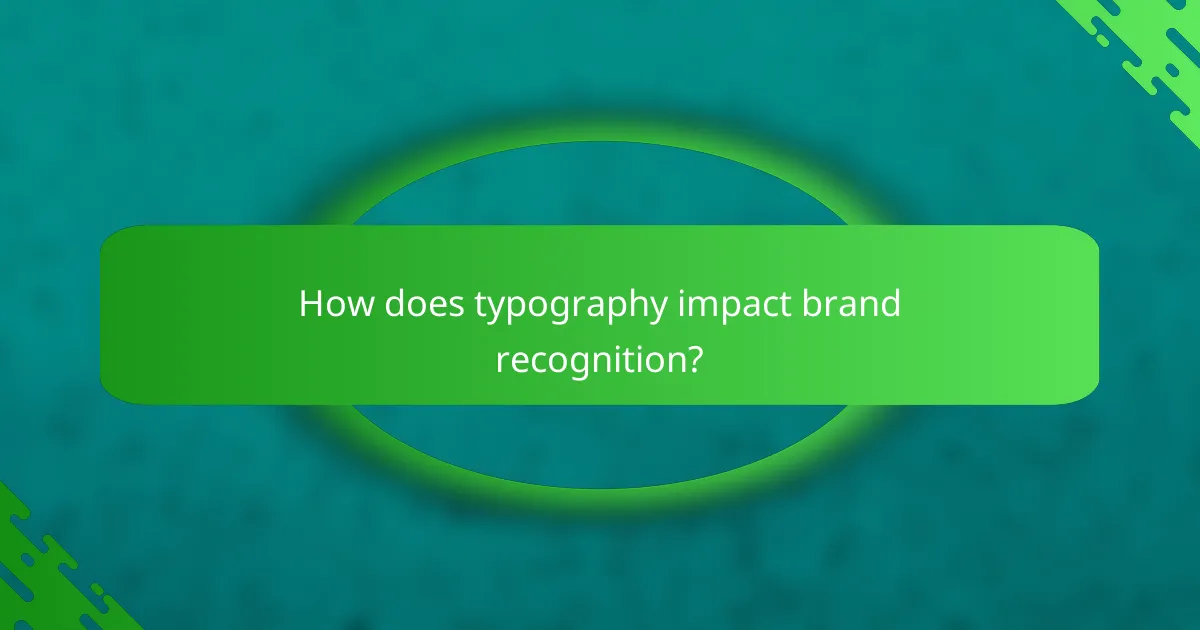
How does typography impact brand recognition?
Typography significantly influences brand recognition by shaping how consumers perceive and remember a brand. The choice of fonts, styles, and consistency can create a strong visual identity that resonates with target audiences.
Consistent font usage enhances brand identity
Using the same fonts across various platforms helps establish a cohesive brand identity. This consistency allows consumers to easily recognize a brand, whether they encounter it on a website, social media, or print materials.
For example, brands like Coca-Cola and Google have distinct typography that remains uniform across all their communications. This familiarity fosters trust and loyalty among consumers.
Typography influences consumer perception
The choice of typography can evoke specific emotions and associations, impacting how consumers view a brand. For instance, serif fonts often convey tradition and reliability, while sans-serif fonts may suggest modernity and simplicity.
Consider the difference between a luxury brand using elegant script fonts versus a tech startup opting for clean, minimalist typefaces. Each choice sends a message about the brand’s values and positioning in the market.
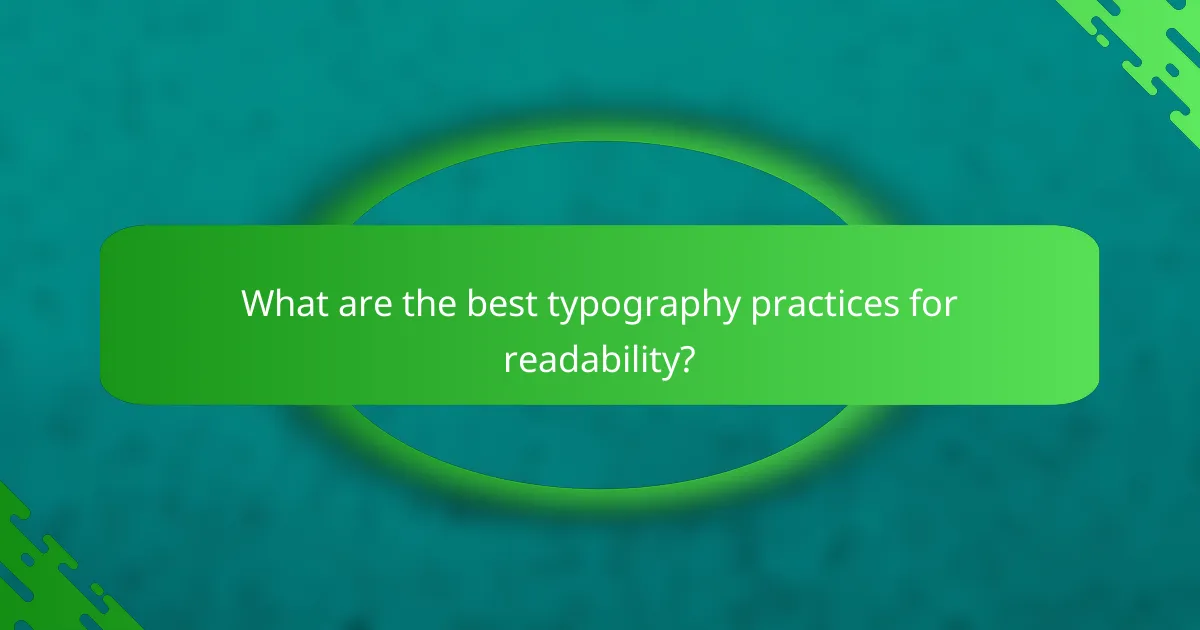
What are the best typography practices for readability?
Effective typography practices for readability focus on using clear fonts, appropriate spacing, and sufficient contrast. These elements enhance the overall user experience and ensure that content is easily digestible across various devices.
Use legible fonts for digital content
Selecting legible fonts is crucial for digital content, as it directly affects how easily users can read and comprehend text. Sans-serif fonts like Arial, Helvetica, and Open Sans are often preferred for online use due to their clean lines and simplicity.
When choosing fonts, consider size and weight. A font size of at least 16 pixels is recommended for body text, while headings should be larger to create a clear hierarchy. Avoid overly decorative fonts that can distract from the message.
Maintain appropriate line spacing and contrast
Line spacing, or leading, should be set between 1.5 to 1.75 times the font size to improve readability. This spacing prevents lines from appearing cramped, allowing the reader’s eyes to move smoothly from one line to the next.
Contrast between text and background is equally important. Aim for a contrast ratio of at least 4.5:1 for normal text to ensure legibility. Dark text on a light background or vice versa typically works best. Test your designs on various screens to confirm readability across devices.

Which fonts are most effective for e-commerce?
Effective fonts for e-commerce are those that enhance readability and foster brand recognition. Sans-serif fonts are particularly favored for online platforms due to their clean lines and modern appearance, making them ideal for digital shopping experiences.
Sans-serif fonts improve online readability
Sans-serif fonts are designed without the small projecting features at the ends of strokes, which makes them easier to read on screens. Their simplicity helps reduce visual clutter, allowing customers to focus on product details and calls to action. This is crucial in e-commerce, where quick comprehension can lead to higher conversion rates.
When selecting a sans-serif font, consider factors like size and spacing. A font size between 14-16 pixels is generally recommended for body text, while line spacing should be around 1.5 times the font size to enhance legibility. Avoid overly decorative fonts that can distract from the shopping experience.
Popular e-commerce fonts include Arial and Helvetica
Arial and Helvetica are two of the most commonly used fonts in e-commerce due to their versatility and clarity. Both fonts are widely recognized and provide a professional appearance that can enhance brand credibility. They are also compatible with various devices and screen sizes, ensuring a consistent user experience.
When choosing between these fonts, consider your brand identity. Arial has a more rounded appearance, which can convey friendliness, while Helvetica offers a more neutral and modern look. Test different fonts with your target audience to determine which resonates best with your brand and improves user engagement.
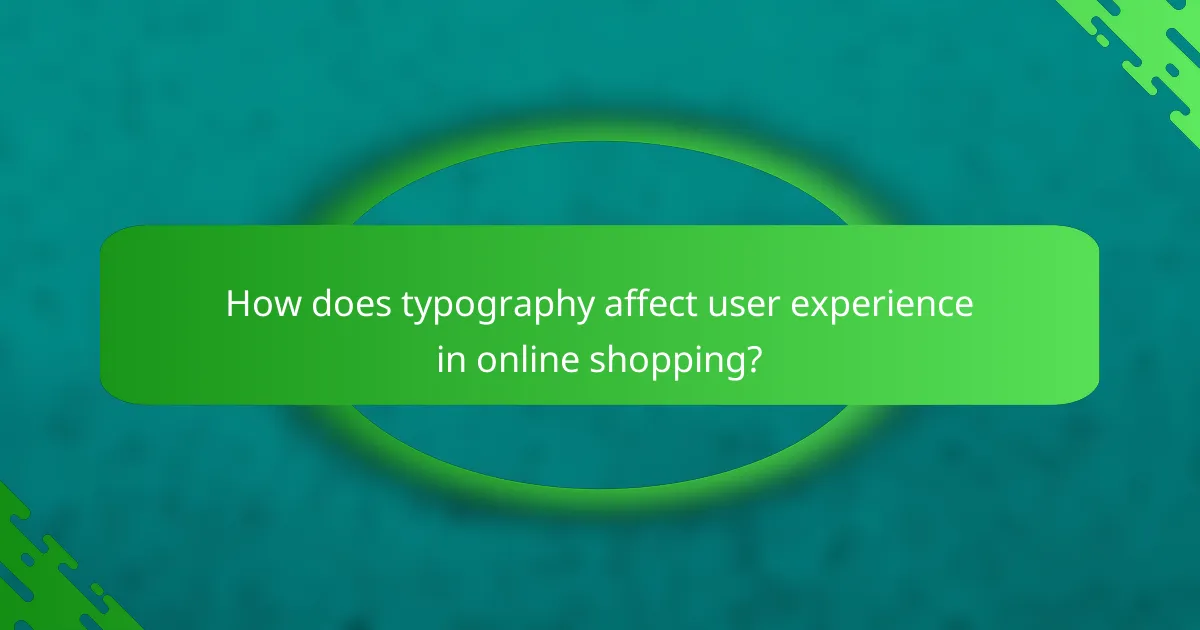
How does typography affect user experience in online shopping?
Typography significantly impacts user experience in online shopping by influencing readability and brand perception. Well-chosen fonts can enhance clarity, making it easier for customers to navigate and make purchasing decisions.
Clear typography reduces cognitive load
Clear typography minimizes cognitive load by making text easy to read and understand. When users encounter legible fonts and appropriate sizes, they can process information quickly, which is crucial in a fast-paced online shopping environment.
For example, using sans-serif fonts for body text can improve readability on screens, while maintaining a font size of at least 16px helps ensure that users do not strain their eyes. Avoid overly decorative fonts that may confuse or distract shoppers.
Effective typography guides user navigation
Effective typography plays a vital role in guiding user navigation by establishing a visual hierarchy. By using different font sizes, weights, and colors, websites can direct attention to key elements like headings, calls to action, and product descriptions.
For instance, larger and bolder fonts for headings can help users quickly identify sections of interest, while contrasting colors can highlight important buttons, such as “Add to Cart.” Consistency in typography across the site also fosters familiarity, making navigation intuitive.
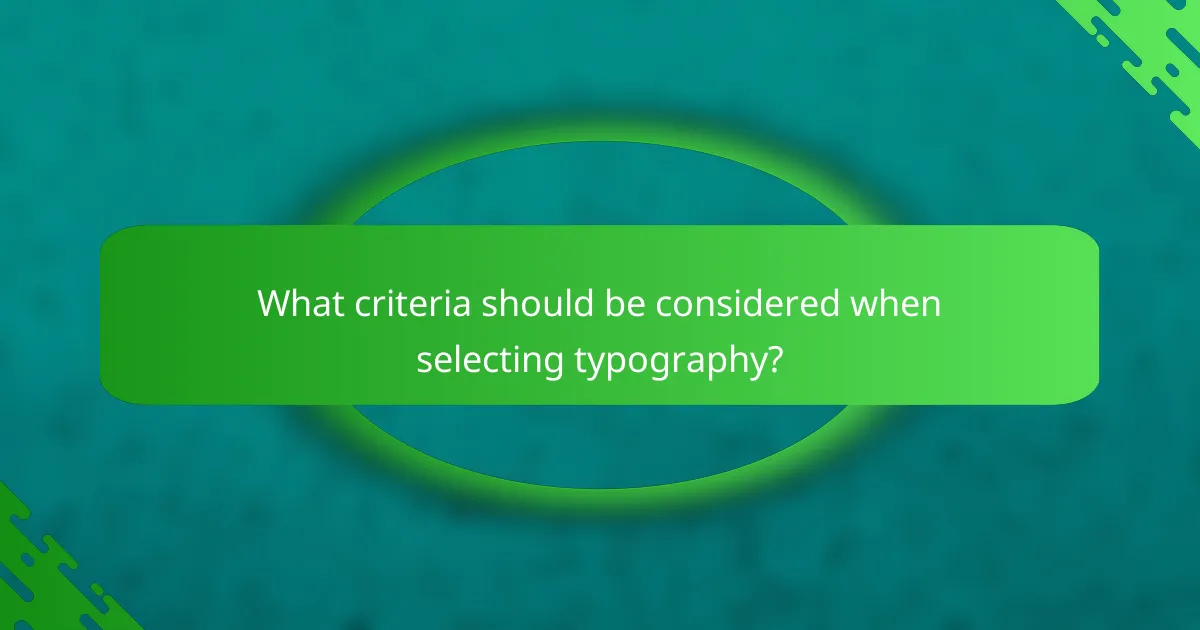
What criteria should be considered when selecting typography?
Selecting typography involves evaluating factors that impact readability, brand identity, and user experience. Key criteria include brand alignment, target audience preferences, and compatibility across various devices.
Brand alignment and target audience
Typography should reflect your brand’s personality and values while resonating with your target audience. For instance, a tech company might opt for modern, sans-serif fonts to convey innovation, while a luxury brand may choose elegant serif fonts to evoke sophistication.
Understanding your audience’s preferences can guide font selection. Conducting surveys or analyzing competitors can provide insights into what styles appeal to your demographic, ensuring your typography enhances brand recognition.
Font compatibility across devices
Ensuring font compatibility across devices is crucial for maintaining a consistent user experience. Fonts should render well on various screen sizes and resolutions, from mobile phones to desktop monitors. Using web-safe fonts or services like Google Fonts can help achieve this compatibility.
Test your typography on different browsers and devices to identify any issues. Consider using fallback fonts to ensure readability if the primary font fails to load. This practice helps maintain a professional appearance and keeps users engaged.

What are the emerging trends in typography for 2024?
In 2024, typography trends are shifting towards greater flexibility and boldness, enhancing both readability and brand recognition. Key developments include the adoption of variable fonts and the use of bold typography to create impactful messaging.
Variable fonts for enhanced flexibility
Variable fonts allow designers to use a single font file that can adapt to various styles and weights, providing greater flexibility in design. This technology reduces loading times and improves website performance, as it minimizes the number of font files needed.
When implementing variable fonts, consider how they can enhance your brand’s visual identity. For instance, a single variable font can offer multiple weights, allowing for a cohesive look across different platforms while maintaining readability. Aim for a balance between creativity and clarity to ensure your message is effectively communicated.
Bold typography for impactful messaging
Bold typography is gaining traction as a means to capture attention and convey strong messages. Using larger, bolder typefaces can help key information stand out, making it easier for audiences to grasp essential points quickly.
When choosing bold fonts, ensure they align with your brand’s personality. For example, a tech company might opt for a sleek, modern bold typeface, while a creative agency could choose a more artistic style. Avoid overusing bold text, as it can diminish its impact; instead, reserve it for headlines or critical calls to action.
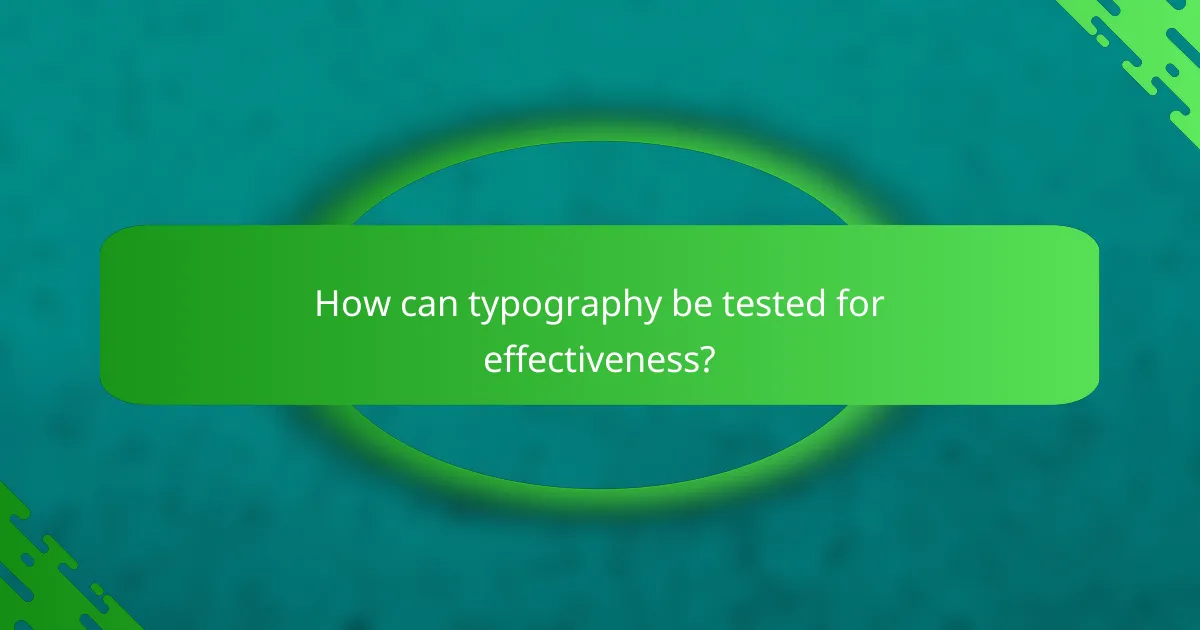
How can typography be tested for effectiveness?
Typography can be tested for effectiveness through methods such as A/B testing and gathering user feedback. These approaches help determine which font styles enhance readability and brand recognition, ultimately guiding design decisions.
A/B testing different font styles
A/B testing involves presenting two or more font styles to users to evaluate their preferences and performance. For instance, you might test a serif font against a sans-serif font to see which one leads to higher engagement on a website. Aim for a sample size that reflects your target audience to ensure reliable results.
When conducting A/B tests, consider metrics such as time spent on page, click-through rates, and conversion rates. A clear winner can emerge from these comparisons, allowing you to choose the most effective typography for your brand.
User feedback on readability and appeal
User feedback is essential for understanding how typography impacts readability and overall appeal. Surveys and interviews can provide insights into how easily users can read text and their aesthetic preferences. For example, ask users to rate different font styles on a scale from 1 to 5 based on clarity and attractiveness.
Additionally, consider using tools like heatmaps to visualize where users focus their attention. This data can reveal whether certain fonts enhance or hinder user experience, guiding your typography choices effectively.



